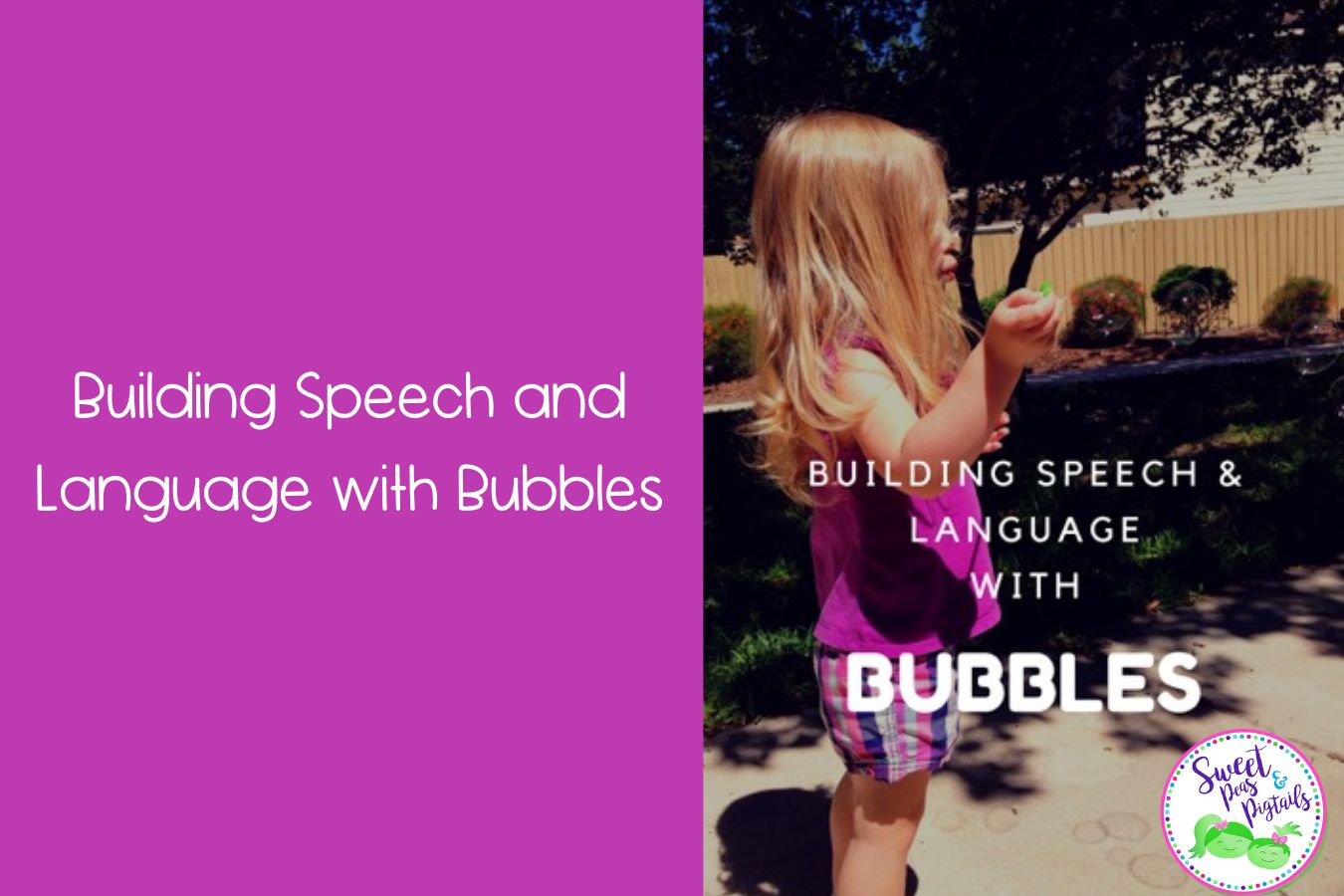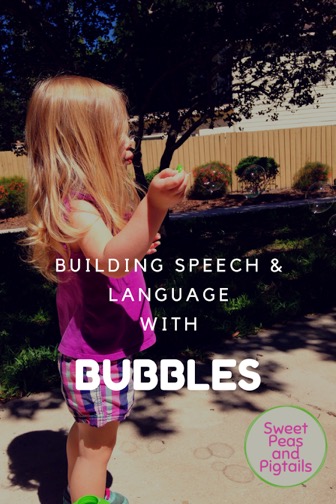
I grew up playing with bubbles and babysat children who loved bubbles. It wasn’t until I became a speech pathologist 11 years ago that I really began to see just how amazing blowing bubbles were at promoting speech and language skills! I use bubbles in therapy all. the. time. And not those bubble machines, although those are pretty fun. I’m talking about the good, ol’ fashioned bubble containers with the wands. They can be used inside or outside and taken on the go, they’re affordable, and not to mention super fun and engaging! I haven’t met a child who does not like them. Read on to find out how blowing bubbles can boost your child’s speech and language development.

How do I use bubbles for requesting? During my therapy sessions, I often give my kiddos a choice of two or three activities. If they choose bubbles, depending on their level, they must provide some sort of gesture (sign for “bubbles” or “more”), sound (/b/), syllable (“buh), word (“bubble”), phrase (“more bubble” or “want bubble”) or sentence (“I want bubbles”) to receive the bubbles. For example, if I’m working with a toddler who does not have many words, I may have them start to sign the word bubbles. I then would give the child the bubbles for a few turns and then I’d close the container and start the process again.
When a child needs to work on the /p/, /b/, or /m/ sound, I pull out the bubbles. Why? These are bilabial sounds, or sounds made with the lips. There are so many words with these sounds that we can teach while blowing bubbles: “pop,” “bubble,” “up,” “more,” “open,” “dip,” “me,” “bye,” “big,” “blow,” and “please.” Working on these words also teaches them new vocabulary, which leads me to my next point.
If you need to increase your kiddo’s vocabulary, try bubbles! In addition to the words I mentioned above, you can teach them “all done,” “stop,” “close,” “lid,” “catch,” “go,” “on,” “off,” “wet,” “in,” “out,” “fly,” and the list can go on and on! If you have a toddler who is starting to use phrases and sentences, use some of these words together and comment about the bubbles as you play with them: “That’s a big bubble!” “It popped on my head!” “I am wet!” “I caught the bubble!”
Have a child on your caseload who does not make eye contact? Maybe your toddler or preschooler at home struggles with eye contact. Bring out the bubbles! Isn’t it crazy that something as simple as blowing bubbles can promote eye contact?! Make sure you are face to face with your child and begin blowing the bubbles. Wait for your child to make eye contact before you blow the bubbles again.
Blowing bubbles is a simple way to work on turn taking. Take turns with your child blowing and popping the bubbles saying “my turn” and “your turn.” This is something I’m working on at home with my two-year-old!
Bubbles are great communication temptations. I like to get those big colorful bubble containers and put them up high somewhere where the kids will notice them but can’t reach them. At home, I have them on top of our refrigerator in our garage. Because the child can’t reach them, they need to use gestures or words to get the bubbles. When you get the bubbles, hand it to your child. Sometimes the lid is hard to open so they may again have to use gestures or words or maybe even eye contact for you to open the lid.
Blowing bubbles is great for teaching children how to round their lips for the /w/, /o/, and oo. Watch to see if they are rounding their lips when they blow. If they have difficulty with this, gently use your hands and place their cheeks/lips in the correct position. When I notice difficulty with this task, we also try to say more words such as “wet,” “want,” and “more” to encourage lip rounding.
Did you know that blowing bubbles can strengthen your child’s abdominal muscles? This is important for increasing sentence length and sustaining speech. When targeting breath support, I often instruct the child to take a big breath and blow a long stream of bubbles. The kids love it and we turn it into a game trying to blow a longer stream than the last one.
Well there ya have it! That’s how I like to use bubbles to promote speech and language skills with my kids! How do you use bubbles in therapy or at home with your children?
